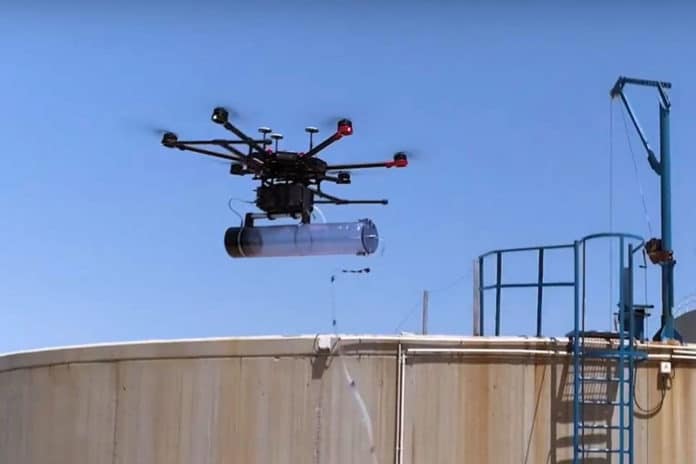The odors that come from a wastewater treatment plant aren’t always pleasant. Quantification of odor emissions in these plants is key to minimizing odor impact on surrounding communities. Wastewater plants’ odor is usually measured by either expensive and discontinuous olfactometry hydrogen sulfide detectors or via fixed electronic noses.
A team of Spanish scientists has engineered, with the help of artificial intelligence, a portable, lightweight electronic nose (e-nose) that’s almost as sharp as a human nose at sniffing out the stink of wastewater treatment plants. When coupled with small drones, the lightweight e-nose can measure the concentration of different smells, predict odor intensity, and produce a real-time odor map of the plant for management.
Led by Prof. Santiago Marco, scientists at Spain’s Institute for Bioengineering of Catalonia, the team collected bags of air from a plant and trained the e-nose to sniff out pungent chemicals such as hydrogen sulfide, ammonia, and sulfur dioxide, which smells like rotten eggs, urine, and burnt matches, respectively. The 1.3-kilogram (2.9-pound) e-nose is also equipped with a sensor for carbon dioxide – an indicator of bacterial activity – and artificial-intelligence-based algorithms to detect and measure levels of unpleasant odor.
During the tests, researchers attached the e-nose to a drone and sent it into the skies at a medium wastewater treatment plant in the south of Spain. Hovering over different facilities at the plant, the “sniffing drone” sucks in air via a 10-meter (33-foot) tube and analyzes the air in a sensor chamber.
The e-nose may not be entirely perfected yet; its analyses mostly matched the 10 out of 13 correct responses provided by the human panel’s assessments. The team also mapped out the temporal and spatial odor concentration and predicted the intensity of the scent from drone measurements for the first time.
Researchers plan to further optimize the device against the influence of temperature, humidity, and other environmental conditions that can affect the accuracy.
“We are extremely happy with the results, but we need more validation and to make the device more robust for a real plant operation,” says senior author Santiago Marco of the Institute for Bioengineering of Catalonia. “The work may also have implications for other facilities like landfills, composting plants, or even large farms with cattle and pigs that are also known to produce all types of malodors.”
